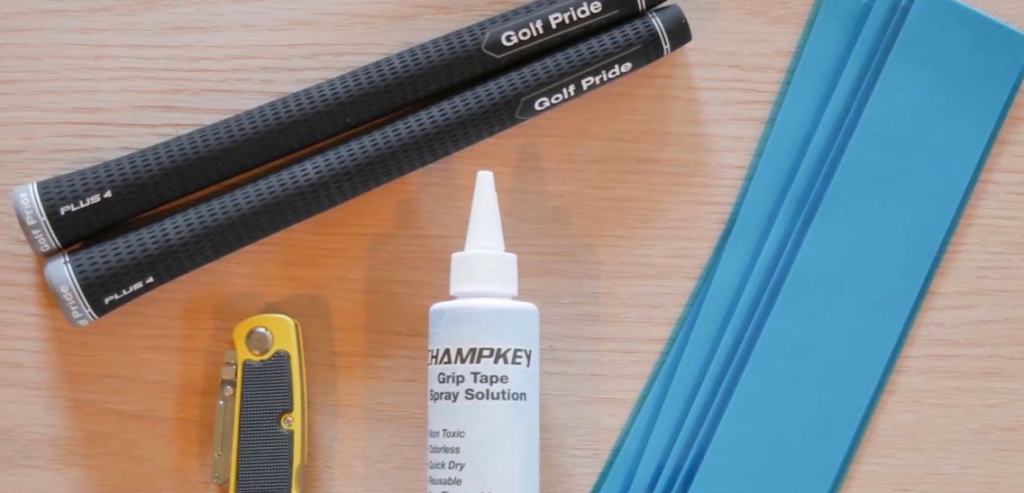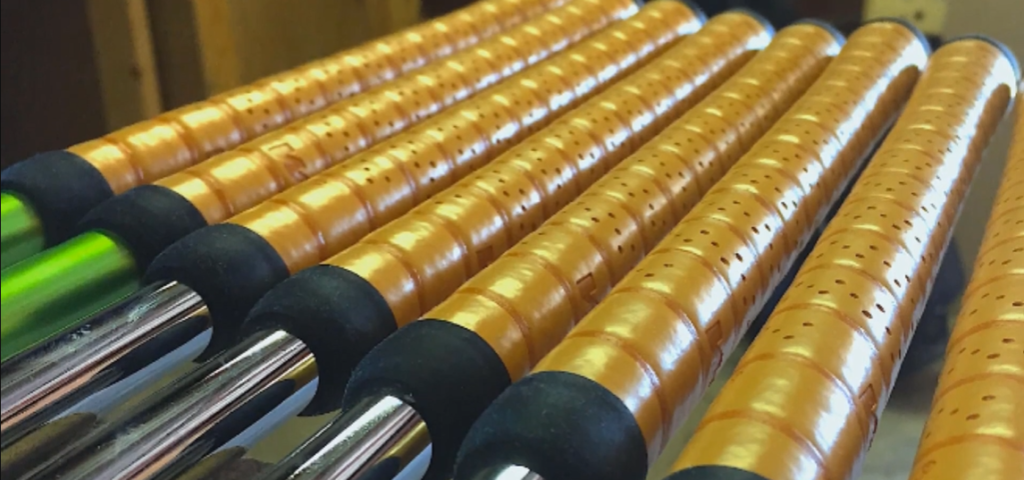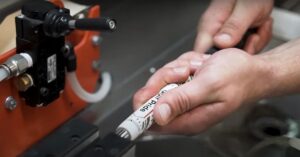How Long To Wait After Regripping Putter? A Comprehensive Guide
Golf is a sport of precision, where the smallest details can significantly impact your game. One such detail is the grip of your putter. Regripping your putter is a necessary part of maintaining your equipment, ensuring that you’re always playing at your best.
But after regripping, how long should you wait before putting it back into action? In golf, the general rule of thumb is to wait at least 24 hours after regripping your putter before using it in a game.
This blog post will answer this question, providing you with a detailed guide to regripping your putter and other relevant information. Read along!
How Long To Wait After Regripping Putter?

It is commonly advised in golf to wait a minimum of 24 hours after regripping your putter before using it in a game. After regripping your putter, it is important to wait for a sufficient amount of time before using it to ensure that the grip is properly secure.
Here’s why waiting is necessary and why a waiting period of at least 24 hours is generally recommended:
Solvent Evaporation
During the regripping process, a solvent is used to install the new grip onto the putter shaft. This solvent helps to lubricate the grip, making it easier to slide on.
However, the solvent needs time to evaporate completely. If you use the putter too soon, the residual solvent may not have dried, resulting in a less secure grip.
Grip Adhesion
Waiting allows the adhesive or tape used to secure the grip to bond with the shaft fully.
This bonding process takes time, and using the putter before the adhesive has fully cured can lead to the grip twisting or moving during your swing, negatively affecting your putting stroke and accuracy.
Grip Stability
Waiting for the recommended time period ensures that the grip has settled and molded to the contours of your hands.
Grips are designed to provide optimal feel, comfort, and control, and allowing the grip to settle ensures that it will perform as intended during your putts.
Safety and Consistency
Using a putter with a newly regripped grip before it has properly set can pose safety risks.
A loose grip can lead to unexpected slips during your stroke, potentially causing injury or a mis-hit.
Additionally, waiting for the grip to cure fully promotes consistency in your putting game by ensuring that the feel and performance of the grip remain consistent throughout your rounds.
It’s worth noting that the specific drying time may vary depending on the type of grip and adhesive used.
Always refer to the instructions provided by the grip manufacturer or consult with a professional club fitter to determine the appropriate waiting period for your particular regripping setup.
Note: By waiting for the recommended period, you allow the grip to adhere fully and provide the stability, comfort, and performance you expect from your putter. Patience in this regard ensures that you can putt with confidence and maximize your chances of success on the greens.
When Is the Best Time To Regrip Your Clubs?
The best time to regrip your golf clubs depends on a few different factors. If you play golf regularly, you may need to regrip your clubs every year or two.
Even if you don’t play frequently, the grips on your clubs can still wear out over time.
As a general rule, it’s advised to replace your grips every 2-3 years, regardless of your play frequency.
Signs of wear and tear on your grips are also an indicator that it’s time for a change.
In terms of the time of day or the specific circumstances for regripping, it’s advised to do the task at night and let the clubs sit overnight before using them.
This allows sufficient time for the bond between the grip, the tape, and the solvent to set, which is crucial for the life and performance of the grip.
How To Regrip Your Putter? [Step-By-Step Guide]

Let’s take a step-by-step look at the regripping process:
- Step 1: Use a grip cutter or a utility knife to slice off the old grip. Be careful not to damage the shaft.
- Step 2: After the grip is off, peel off the old tape. Use grip solvent to help loosen the stubborn tape.
- Step 3: Apply the new double-sided grip tape along the shaft, leaving some overhang to insert into the grip’s open end.
- Step 4: Pour the grip solvent over the tape and inside the new grip. This allows the grip to slide onto the shaft easily.
- Step 5: Slide the new grip onto the shaft, aligning it properly with the clubface.
- Step 6: This is the most crucial step. Allow the putter to dry for at least 24 hours to ensure the grip is secure.
How to Tell When Your Putters Are Ready To Be Used After Regripping?
After regripping your golf clubs, it’s essential to give them time to dry so that the grip adheres to the Putter properly.
However, as a rule of thumb, the longer you wait, the better the results are likely to be.
Here are a few general tips that might help based on the available information and general knowledge:
Observing the Grip’s Surface
If the grip’s surface is dry to the touch and there are no areas that feel slippery, this is a good sign that the solvent has dried and the grip is ready to use.
Stability
Try lightly twisting the grip. If it doesn’t move or rotate around the shaft of the club, it’s likely ready for use.
Remember, the grip should feel secure; any movement could indicate that the solvent is still drying.
Time
As the search results suggested, waiting at least 4 to 24 hours is a common recommendation for allowing grips to dry after regripping. This is a solid rule of thumb to follow if you’re unsure.
Manufacturer’s Instructions
Always check the manufacturer’s instructions that came with your grips or the solvent used during installation.
Different brands may have different drying times, and it’s best to adhere to their guidelines.
Consequences Of Using Your Newly Regripped Golf Putters Too Soon
When you regrip your golf clubs, it’s typically recommended to wait for some time before using them.
This waiting period is essential because it allows the grip solvent to evaporate fully, ensuring the grip adhesive has fully set and bonded with the club’s shaft.
Here are a few consequences you might face if you use your newly regripped golf clubs too soon:
Slippage
The primary risk is that the grip may not be fully secured and could slip during use.
This can affect your swing and your control of the club, leading to poor shots and potential frustration.
Improper Bonding
Using the clubs too soon might prevent the adhesive from bonding correctly with the club’s shaft, leading to a loose grip over time.
This could mean you’ll need to regrip the putters sooner than if you had let the grip set properly initially.
Inconsistent Performance
As the grip hasn’t been fully set, it can lead to inconsistent performance. This can not only affect the current game but can also lead to confusion and frustration as you try to figure out what’s going wrong with your swing.
Potential Damage
If the grip is loose, it could potentially move during a swing, leading to uneven wear or even damage to the grip or the putter shaft.
Note: To avoid these problems, it’s generally best to wait at least a few hours, or even overnight, to ensure that the grips are fully dry and secure before using your clubs. Always follow the instructions provided with your grip kit or by your club professional for the best results.
Should You Try To Dry The Newly Gripped Putter Faster?
When re-gripping a golf club such as a putter, it’s generally recommended to let the grip dry naturally.
After installing a new grip, we already mentioned that it typically takes about 24 hours for the adhesive and solvent to dry completely and secure the grip in place.
Trying to speed up the drying process with a hair dryer or any heat source could potentially damage the grip material, distort the grip’s shape, or weaken the adhesive, all of which could lead to performance issues or decreased lifespan of the grip.
It’s also important to note that different grips may require different drying times depending on the materials used and the type of adhesive or solvent.
Always follow the manufacturer’s instructions for best results. Patience is key in this process to ensure that your new grip is properly installed and will perform at its best.
Where To Store Your Putters After Regripping?

After re-gripping your putters, it’s best to store them in a dry, temperate environment to allow the grip to dry and set properly. Here are some tips for storing your newly gripped putters:
- Upright Position: Store the clubs upright, ideally in a golf bag or club stand. This will prevent any pressure or distortion on the grip while it’s drying.
- Room Temperature: Try to store the clubs in a room that is at a “normal” temperature, not too hot or cold. Extreme temperatures could potentially affect the drying process or damage the grips.
- Avoid Humidity: A humid environment can slow down the drying process, so try to store your clubs in a room with low humidity if possible.
- Away from Heat Sources: As mentioned before, heat can damage the grip or the adhesive, so keep your clubs away from heaters or any other heat sources.
- Avoid Direct Sunlight: Direct sunlight can cause the grip to fade over time and can also heat the grip, potentially affecting the drying process. So, try to store your clubs in a place out of direct sunlight.
Things To Consider While Regripping Putter
To further enhance your understanding, let’s discuss a few additional topics related to regripping.
Choosing the Right Grip
The type and size of the grip can significantly affect your putting performance.
Ensure you choose a grip that fits your hand size and playing style. Oversize grips can help players with wristy strokes, while a smaller grip suits players who use their fingers more.
Cost of Regripping
The cost of regripping your putter can vary based on the grip you choose and whether you do it yourself or hire a professional. Doing it yourself can save money but requires some skill and patience.
Regripping and the Weather
Weather conditions can affect how long the solvent takes to dry.
In humid or cold conditions, you might need to wait a bit longer than 24 hours. Always make sure the grip is fully dry and secure before using your putter.
Safety During Regripping
Remember to take precautions when regripping your putter. The solvents used can be flammable and harmful if inhaled or if they come into contact with your skin. Always work in a well-ventilated area, and consider wearing gloves.
Effect of a New Grip on Performance
A fresh grip can significantly improve your game. It provides better traction, allowing for more control and a consistent stroke.
You might notice your shots becoming more precise and consistent after regripping your putter.
FAQs
Many golfers wonder about the specifics of regripping their putters, leading us to create this FAQ section to address common questions.
Why should I regrip my putter?
Regripping your putter ensures optimal performance. Over time, grips wear out and can negatively affect your game by decreasing control and accuracy.
How often should I regrip my putter?
As a general rule, you should regrip your putter at least once a year. However, if you play frequently, you may need to do it more often.
Can I use my putter immediately after regripping?
It’s advisable to wait at least 24 hours after regripping before using your putter. This allows the solvent to dry fully, securing the grip.
What solvent should I use for regripping?
You can use a specialized grip solvent or alternatively, some golfers use lighter fluid or mineral spirits. Always handle these solvents with care.
Conclusion
Regripping your putter is a necessary aspect of maintaining your golf equipment. But remember, patience is key.
Wait for at least 24 hours after regripping before using your putter to ensure the grip is secure.
This waiting period can be the difference between a slippery grip and a game-winning putt.
So, plan your regripping activities carefully to make sure it doesn’t interfere with your golf games.
Whether you’re a seasoned golfer or a beginner, understanding the intricacies of regripping can elevate your game.
So, don’t let a worn-out grip hold you back. Take the time to regrip your putter and experience the difference it can make. Happy golfing!



![How Does Putting Work On Golf Simulator? [Ultimate Guide] How-Does-Putting-Work-On-Golf-Simulator](https://giftedgolfers.com/wp-content/uploads/2023/01/How-Does-Putting-Work-On-Golf-Simulator-300x157.jpg)


